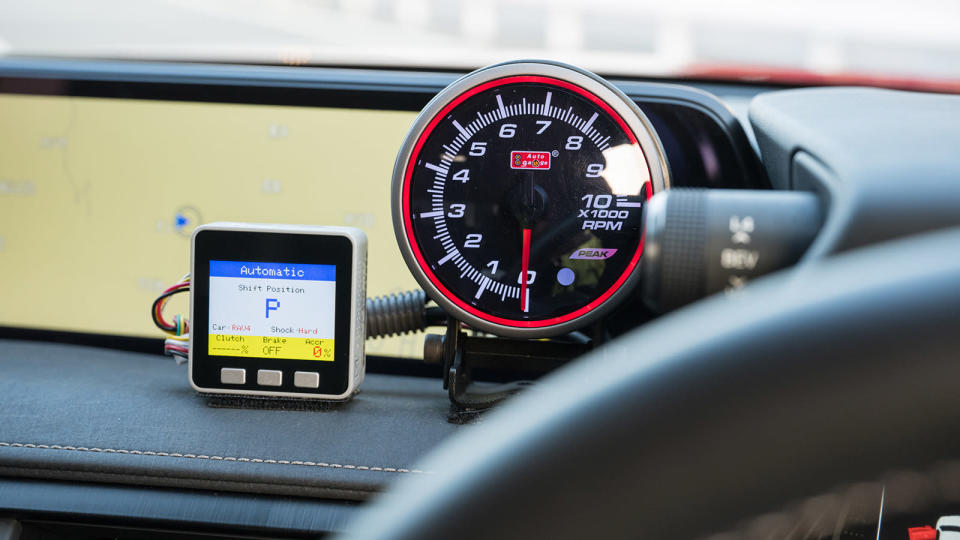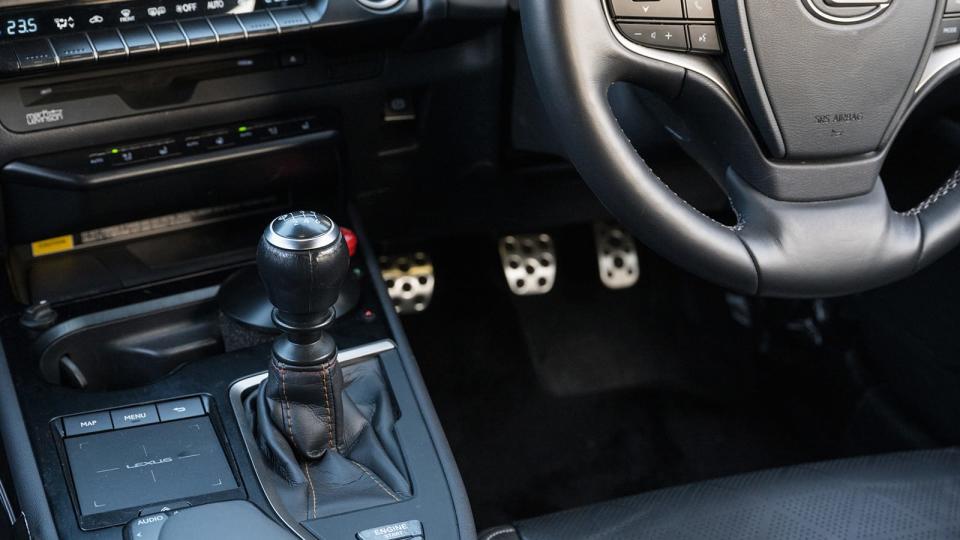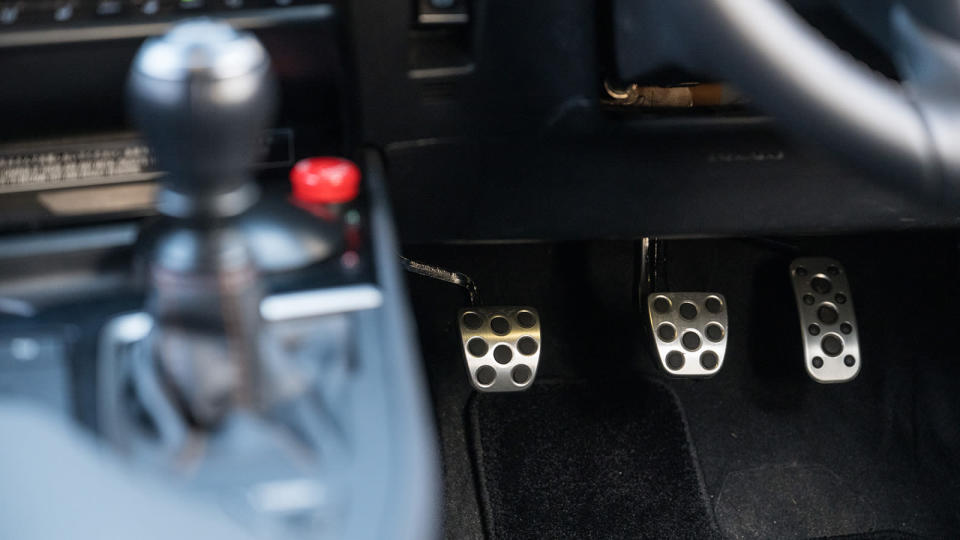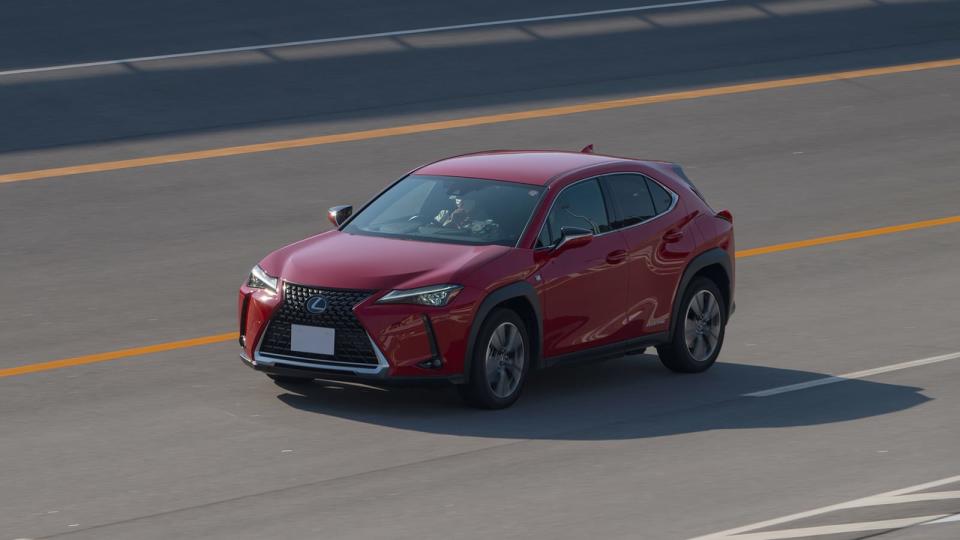We test Toyota's EV with a simulated 'manual transmission,' and it's freaky

Toyota and Lexus made a strange announcement last year: it was developing an EV with a "manual transmission." It even said that it was deep in development, not just tacking the feature onto a non-functional design concept. And the weirdest part of it all was that it would be a manual for an EV that was still just a single-speed EV. It turns out it's all true. The Japanese automaker has been developing the system, and we actually got to try it out, along with another EV prototype that can simulate multiple internal combustion powertrains, at the company's test center outside of Nagoya, Japan. It kind of broke our brains with how well it worked.
Among the many fascinating aspects of these prototype vehicles (a Lexus UX 300e for the manual transmission, and a Lexus RZ for the multiple powertrains) is that the execution is fairly simple. The manual version is the most complex, as it includes the addition of a clutch pedal and an H-pattern shifter, specifically a six-speed. But neither are actually connected to anything. It's literally just the shifter and just the clutch pedal, with no linkages to anything else. Each component also has a sensor to detect shifter and clutch pedal positions. Everything else is entirely operated by software that manipulates the electric motor. The computer simply adjusts how much torque is available depending on RPM, vehicle speed and "gear" in order to simulate an internal combustion engine power curve. It then cuts power when the clutch is depressed. Partial clutch use further adjusts how much torque is available from the motor to simulate clutch slip. The program also adjusts how much regenerative braking is used based on speed, RPM and gear.



The most remarkable trick it performs is the feeling of coming close to stalling. In case you haven't driven a manual transmission vehicle, you should know there's a point where, if you're not giving enough throttle as you lift your foot from the clutch pedal, the car will lightly buck and chug. Either you give it more throttle and it smooths out and keeps going, or you don't, and the car stalls. To create this feeling, Toyota engineers said that they apply frequent, jerky throttle inputs to the electric motor. It will even "shut off" if it doesn't get enough throttle in time. Of course, unlike a manual internal combustion engine, this one "restarts" as soon as the clutch is completely depressed. But it's amazing that basically every powertrain sensation of a manual transmission is simulated, just with clever power and throttle settings for the electric motor.
There are other additions besides the throttle calibrations and controls. Toyota also adds simulated engine sounds for all of these conditions and even a tachometer that receives simulated signals. This means you can hear and see the "revs" rise and fall with pedal applications. You can even pop it into "neutral" and "rev" it.
Among the physical, visual and aural tricks, the UX prototype feels just like a manual internal combustion engine. It's so incredibly natural. And the feedback was realistic enough I had to ask the engineers if there were any sort of force feedback motors in the clutch pedal to communicate feeling, and there are none. The only real chink in the armor is the arcade cabinet-feeling shifter (not being connected to an actual gearbox makes it listless). It's really that good.

Toyota's engineers have also been thinking of silly things you can do with manual transmissions. I asked the engineer riding with me if you could hypothetically do a technique used by drifters called a "clutch kick." This is when a drifter quickly presses and releases the clutch pedal to send a shock through to the rear wheels to help break the rear end loose. He confirmed that's something that could be done. And related to it, he asked me to stop the car on the test course straight, and then "rev" it to 6,000 RPM indicated on the tachometer. He then said for me to quickly release the pedal, and, had I been a little better with my throttle and clutch pedal moves, we would've done a burnout. He said it would also be easier to do a burnout with a bit more power and rear drive.

 Yahoo Autos
Yahoo Autos 
